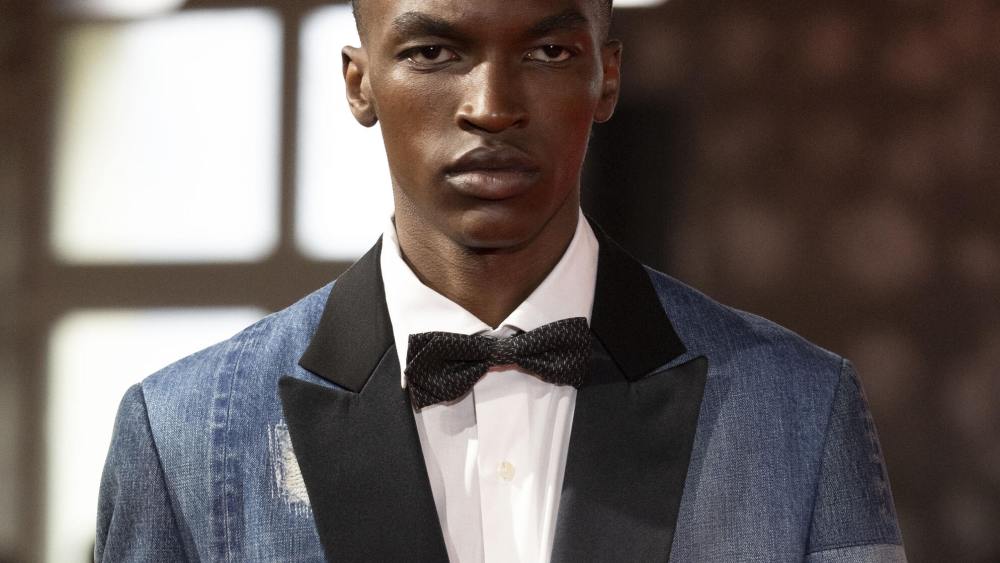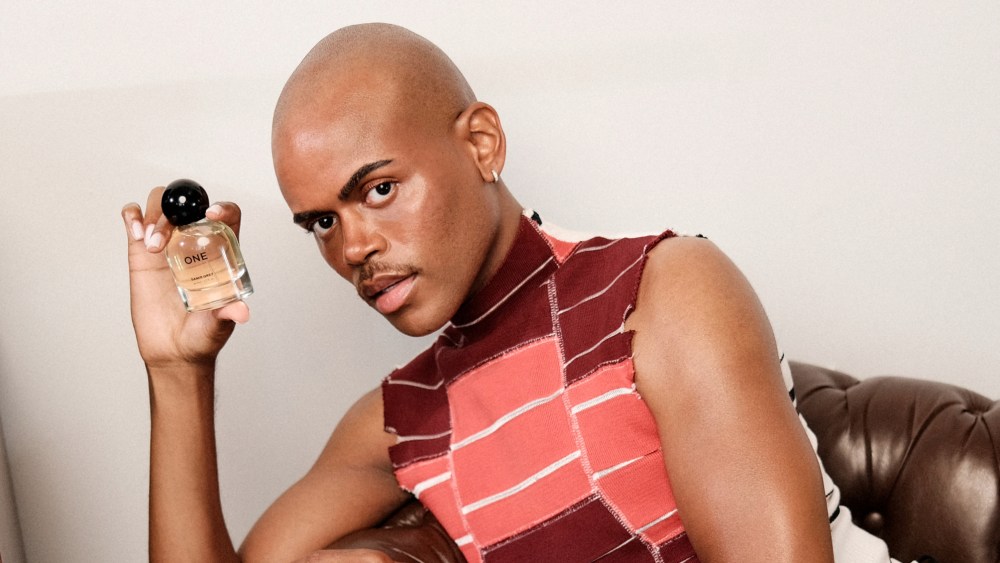Junya Watanabe and denim go way back — and the love affair seems to grow only stronger.
His suave spring 2025 men’s collection, one of the highlights of the Paris season, was crafted with blue, black and white denim, but often in unexpected guises, especially tuxedo jackets painstakingly patchworked and paraded on a red carpet runway.
WWD decided to take a deeper look at how the collection was realized, as it signaled how intensive research and development around a single fabric can produce an inventive, impactful show.
In an interview conducted via an email exchange, the Japanese designer told WWD the concept certainly required more time than usual on fabric sourcing.

“We started by re-researching for denim production factories in Okayama prefecture, Japan and spent most of the collection-creation period creating the fabric with the cooperation of fabric manufacturers and denim processing factories,” he said, highlighting that “there are many denim fabric manufacturers with good quality in Okayama, which is the production center of Japanese denim.”
You May Also Like
Ultimately, Watanabe and his teams narrowed it down to 50 different types of denim fabric. Then the real work began.
“Since denim fabrics can have a different appearance after being processed, depending on the dyeing method and the yarn count, we first tested all the fabrics and selected the ones we needed from a huge number of samples,” the designer explained.
To be sure, Watanabe relished the self-imposed challenge of working with only denim, a perennial favorite material for him. He frequently bases collections on a particular fabric or clothing archetype, like trench coats or biker jackets.
“The creation concept for this collection was to discover something new from trying to adopt a perspective that is different from my experience until now,” he said of his spring 2025 men’s effort. “In that sense, denim fabric was a theme worth taking as a challenge, and by narrowing it down to one fabric, it became necessary to expand its different variations.”
Watching Watanabe’s show during Paris Men’s Fashion Week, one was struck first by the plethora of formalwear archetypes, including white shirts and bow ties, and the intense surface treatments, which were not immediately discernible as denim.

“These variations were achieved by combining various denim processing techniques, combining it with other fabrics through patchwork, and also processing it with craftsman-like handwork,” Watanabe explained. “We were successful in expanding the variations by categorizing it into three types: black denim, indigo denim, and white denim.”
The tuxedo jackets alone were realized with an array of patchwork techniques, fancy trimmings, plus sequin, jacquard and leather patches that heightened the dressy, formal attitude of the show.
Watanabe noted that all of the patchworks were done by hand by his in-house sewing team.
To produce orders for the spring 2025 collection, however, “we have computerized mass-production systems in five embroidery factories across Japan,” Watanabe noted.
The designer acknowledged that many of the key items in the collection are “quite expensive” due to the complicated, labor-intensive way they are made.

Asked about the commercial reaction to his spring 2025 effort, he acknowledged that buyers’ budgets are shrinking due to global inflation. “However, there are always fans who support our creations and I believe they were pleased with them,” he said.
Born in Fukushima, Japan, Watanabe graduated from Tokyo’s renowned Bunka Fashion College in 1984 and immediately joined Comme des Garçons, initially as a pattern cutter and eventually designing the Comme des Garçons Tricot knitwear line. Comme des Garçons founder Rei Kawakubo decided in 1992 to give Watanabe a signature label under her company umbrella, and he added Junya Watanabe Man in 2001.
Levi’s is credited as one of the main collaboration partners for the spring 2025 season and the designer underscored that the iconic American brand — nearly as synonymous with jeans as Kleenex is with facial tissues — has been there since his first men’s collection.
“The reason why I decided to use denim in my first collection was because of Levi’s 501,” he said. “I think this historic presence is one of a kind, and the collaboration started from my desire to present it as part of my collections. Nowadays I think that there are no rules for fashion styles and many designers and people on the street are freely wearing and proposing various styles.”
He characterized his relationship with the denim powerhouse in similar terms.
“Leviʼs guarantees us the right to freely create, and in return, we create items that do not exist under Leviʼs brand. I think this a very good and stimulating relationship for both sides,” he said.
The designer has traveled from Tokyo to San Francisco several times to visit Levi’s headquarters.
“Although our company has a completely different business approach from large American corporations, I feel it is admirable that they accept us and allow us to create freely,” he enthused.
Watanabe said he remembers loving “the little Levi’s Red store I visited in London in the early 2000s.” He was referring to the experimental Red line hatched in 1999 as a laboratory for denim innovation.
Watanabe confessed to collecting some early Levi’s Red items, but “not for R&D purposes,” he pointed out.
Editor’s note: “Anatomy of a Collection” is an occasional, recurring feature delving behind fashion shows with a unique back story, or methodology.



